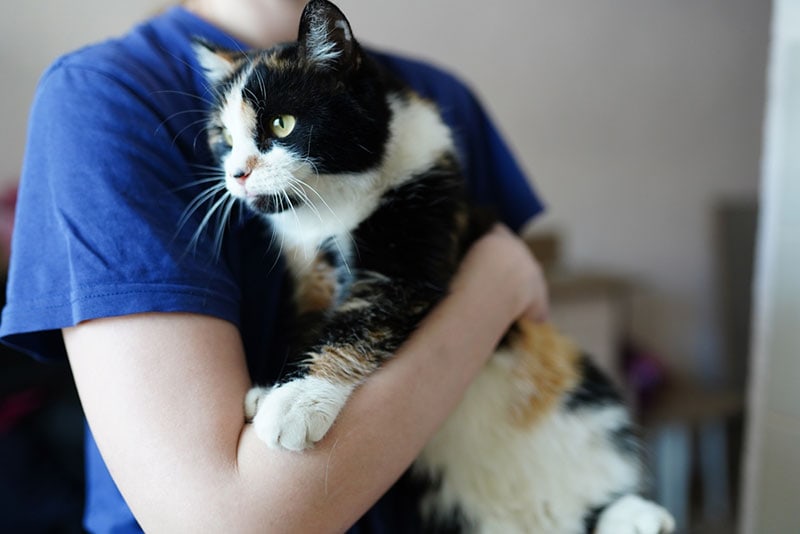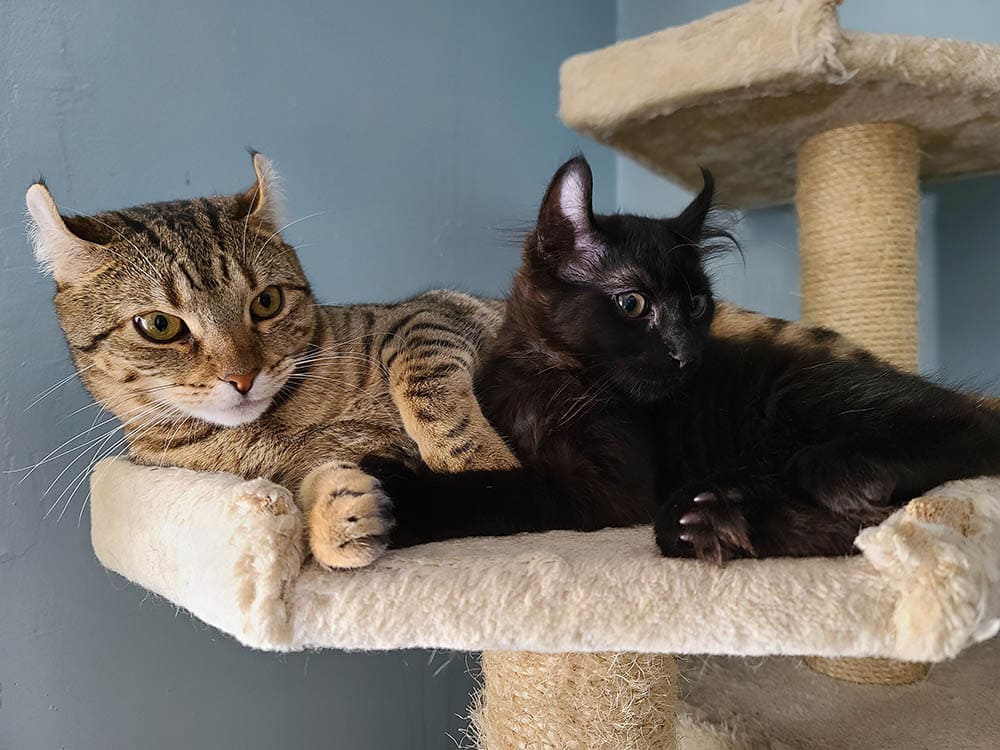How to Socialize Adult Cats: 7 Vet-Approved Tips & FAQ

Updated on

Cats are social creatures which means that they generally enjoy the company of others, whether those others are cats or people. However, some cats are more sociable than others, and this is usually governed by how much socialization they have had throughout their lives. Socialization introduces a cat to new people as well as other animals. It teaches them new experiences do not necessarily need to be feared.
It is generally recommended that cats be socialized from as early an age as possible, but this may not be an option. Whether you are adopting an older cat that hasn’t had much socialization, or you just want to socialize your own older cat, you can find tips below to help you.
The Need for Socialization
There are several reasons why an older cat might not be well-socialized. If you are rescuing or adopting a cat, you can never be fully sure how much socialization they had, and if they have been in a rescue for some time, the cat will benefit from some gradual socialization. Alternatively, some cats have endured traumatic experiences, and some are just naturally shy.
Although it is recommended to socialize cats when they are still young, it is still possible to socialize an older cat. It usually takes longer though, and your cat may never be overly confident when meeting new people.
The 7 Tips on How to Socialize Adult Cats
1. Sign Up Volunteers
Socialization means meeting new people, and it could take some time for your cat to be adventurous enough to investigate any newcomers. Get friends and family involved, invite them around, and have them meet your cat and spend time in their company. It may take several visits, and you will need to enlist several different people, if possible.

2. Take It Slow
When you do invite people around, be patient with your cat. You can’t expect them to take to people straight away, but with every neutral meeting, and especially every positive meeting, your cat will become more comfortable around new people.
3. Try Treats
Get some good-quality treats and hand them to visitors as they come in. When your cat approaches them, they can give a treat. This will encourage the cat to approach that person again and will also teach them that new experiences are positive. Food treats can prove even more successful than toy-based rewards. The cat will start to associate visitors and new people with something positive.

4. Don’t Overwhelm Them
Invite one or two people around at a time. If you invite too large a group, it is likely to stress your cat out and it may set everything back. Let your visitors know not to crowd the cat or try and encourage them to sit on laps or be petted. When your cat approaches and investigates a new person, gently praise them and consider having your visitor give them a treat as a reward.
5. Provide a Safe Space
Always make sure your cat has a safe space to escape to. You can also add a safe space in the room where your visitors are. This way, if your cat is intrigued by new people, they can watch from the top of a cupboard or another safe space. Cats usually prefer higher spots where they feel they are out of the way, but they also like to be able to see the person.

6. Be Patient
You can’t force your cat to befriend or even approach new visitors. You will need to wait until the cat approaches them. You can give visitors a handful of treats or use other techniques that will make your cat more inclined to investigate, though.
7. Make it Fun
Don’t take it too seriously and try to impart some fun into proceedings. If your cat has a favorite game or a favorite toy, use that in the room with your visitors. Eventually, once your cat has built up a little trust, you can have your visitors play with the toy. It’s amazing how quickly some cats will bond with people who are willing to play with their favorite wand toy.

Is Socialization Important?
A socialized cat knows how to behave around people, whether they are family or strangers. They will be confident enough that visitors won’t stress them out and it can help avoid scratches and bites, which are especially common with over-eager children.
Is It Too Late to Socialize My Cat?
Most cats, even adult cats with no previous experience of socialization, can be socialized and it can help reduce their stress, as well as yours. Older cats do tend to take longer to socialize than kittens, but it is still possible, even with seniors.

Can You Socialize an Older Cat With Other Cats?
Introducing two cats can be challenging if one of them is territorial or not used to being around other animals. It will take time and you will need to be patient. Start by making sure both pets have separate spaces that they can disappear into. Ensure you take introductions slowly and don’t put them both in a room and hope they work it out. This post1 has a detailed description of how to successfully introduce cats to each other.
Wrapping Up
Cats benefit from good socialization, and so too do their owners. While it is recommended that you start socialization when your cat is still very young, it is never too late to try. Enlist volunteers to come around. Give them treats when they arrive and let your cat approach them, rather than the other way around. If they do investigate, your visitor can offer a treat as a reward. Invite more people around and keep up the practice. Don’t overwhelm your cat with too many people in any one visit, though.
Featured Image Credit: xixicatphotos, Shutterstock












